I would like to write about Japanese traditional New Year customs today. I have listed 5 customs. Did you know all of them? There are many more!
- Shrine or Temple visit
Some people visit shrines or temples on New Year’s Eve. They go out after dinner and visit shrines or temples to hear ‘Joya no Kane’ the bell at shrines or temples that you can hear for about 1 – 2 hours around midnight. It is one of the most important rituals of the year for Buddhist temples all over Japan. ‘Jo’ means to throw away the old and move on to the new and ‘Ya’ means night. So, it is the perfect night to leave your old self behind and commence the new year with new resolutions and a clear head. The bell is rung 108 times and by the time you count the 108th peal, you are ready to start the new year refreshed without anything troubling your mind.
Most people visit shrines or temples on the 1st of January and it is called ‘Hatsu Moude’. You will find a lot of people queuing in any temples or shrine and what they do are throw some coins to an old wooden box in front of the altar, they clap twice and put both hands in front to pray for a prosperous new year.
People normally buy ‘Omikuji’ – a fortune telling paper strip. You can buy it at 1-2 euros and the fortune granted can range from having a great blessing to a great curse. Even if you get a great curse, you can just tie it on a tree nearby and your wish for a good year may be granted.
You can see so many people from the picture below. Many people visit temples or shrines for the first 3 days of the New Year and everywhere is packed with people!
2. Nengajyo (New year postcard)
In western culture, you send Christmas cards but in Japan we send New Year cards to families and friends. As long as you post the postcards until the deadline set towards the end of December, postmen deliver them on the 1st of January. The card is normally designed with the coming year of the Chinese zodiac. For example this year 2017 is the year of Rooster so some examples are like the pictures below. My parents used to receive almost 100 cards if I remember well and I used to look forward to receiving the cards every year when I was a child. Nowadays thanks to social medias we can see what is going on with friends you don’t see for some period but until decades ago New Year’s card was a way to know how friends are doing.
But greetings to your friends are not the only purpose of ‘Nengajo’. All ‘nengajo’ postcards have lottery numbers on them, and when delivered, the holders of the winning numbers will be able to receive various prizes, which include some expensive items like travel tickets and electronic devices.
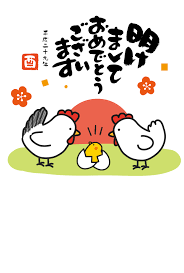
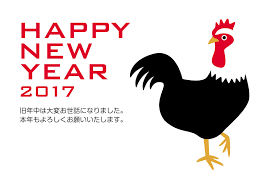
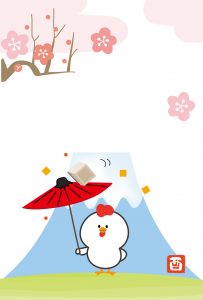
3. Otoshidama (pocket money)
‘Otoshidama’ refers to a Japanese tradition that all children look forward to every year. Kids receive small envelopes with some cash from their parents, grandparents and close relatives, generally from 5-6 people. The average amount of money per envelope is 5,000 yen, but it generally increases as the kids grow up. Japanese like to save money so usually what the kids receive as ‘Otoshidama’ will be saved in a bank account and I used to save it too rather than spending it.
4. Osechi (Japanese traditional New Years food)
Check my previous article from here. For the New Year, special chopsticks called ‘Iwaibashi’ are used. They are made of willow tree and both ends are sharp. This is because one side will be used by yourself, and the other side is believed to be used by a deity. ‘Osechi’ is something that is offered to the deity first, who then allows you to share it so you’ll be blessed with a fruitful year ahead. On New Year’s Eve, the head of the family writes all the family members’ names on the chopsticks paper bag and places it in front of an alter. On the New Year’s Day after using it you wash it by yourself and you can use the same ones until 7th January.
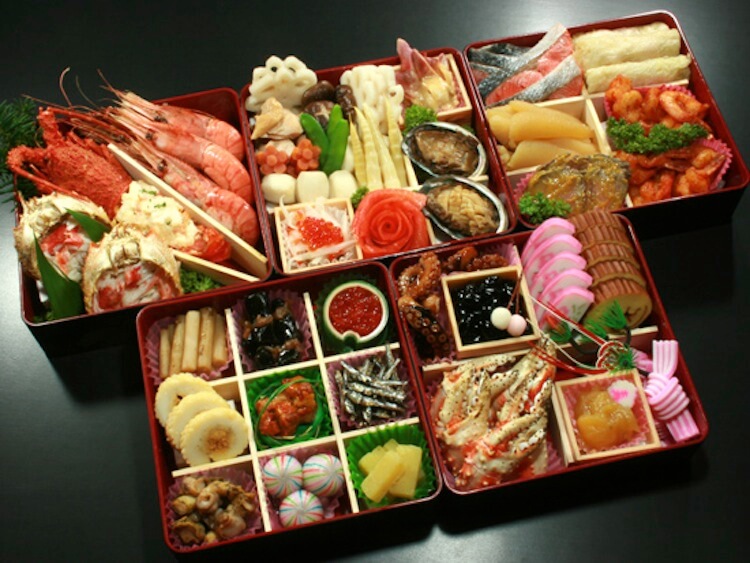
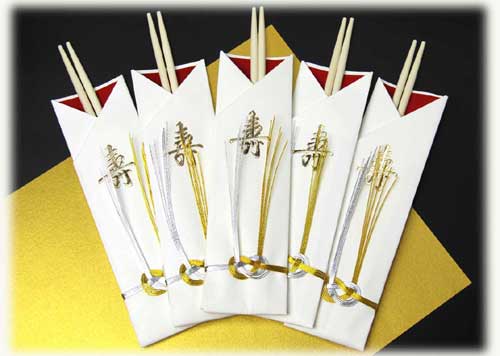
5. Kadomatsu (Japanese traditional decoration of the New Year)
Kadomatsu is a Japanese traditional decoration of the New Year made with Pine, bamboo and plum trees. Each symbolize longevity, prosperity and sturdiness. Kadomatsu is the most important decoration which are placed in front of the house in order to welcome ‘Toshigami sama’ – deity who will ensure a great harvest and blessing for everyone in the house.
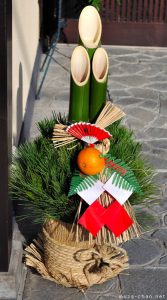

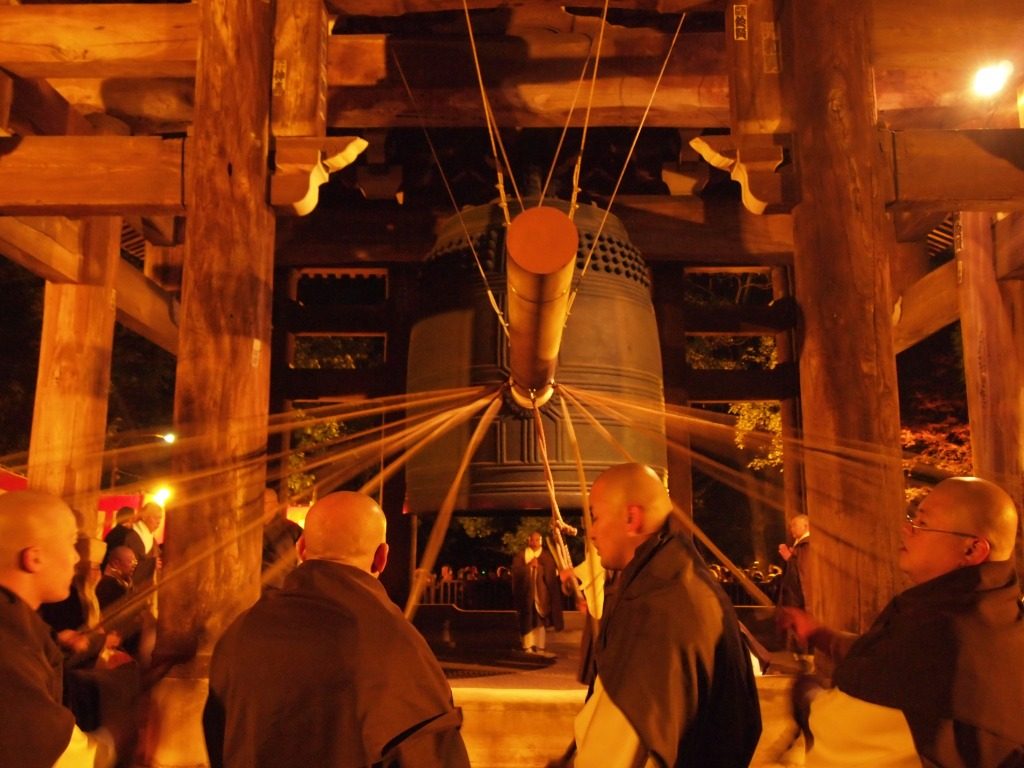
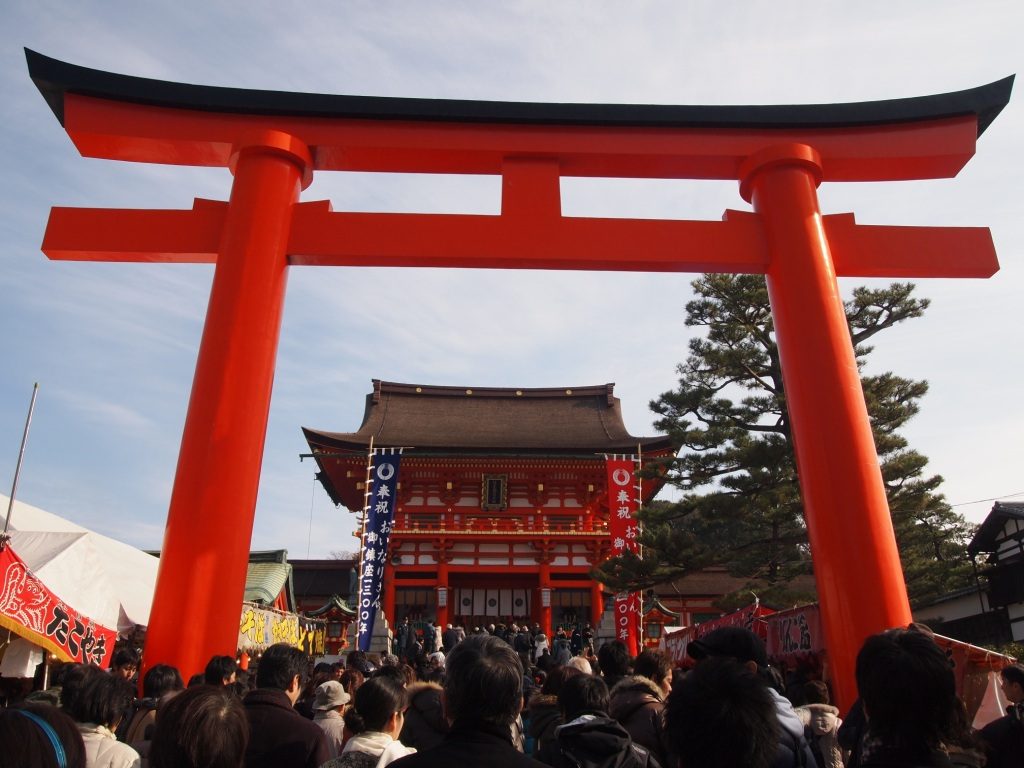
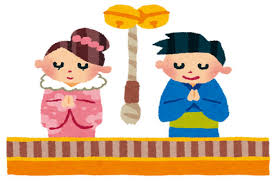
What beautiful positive traditions to welcome positively the New Year